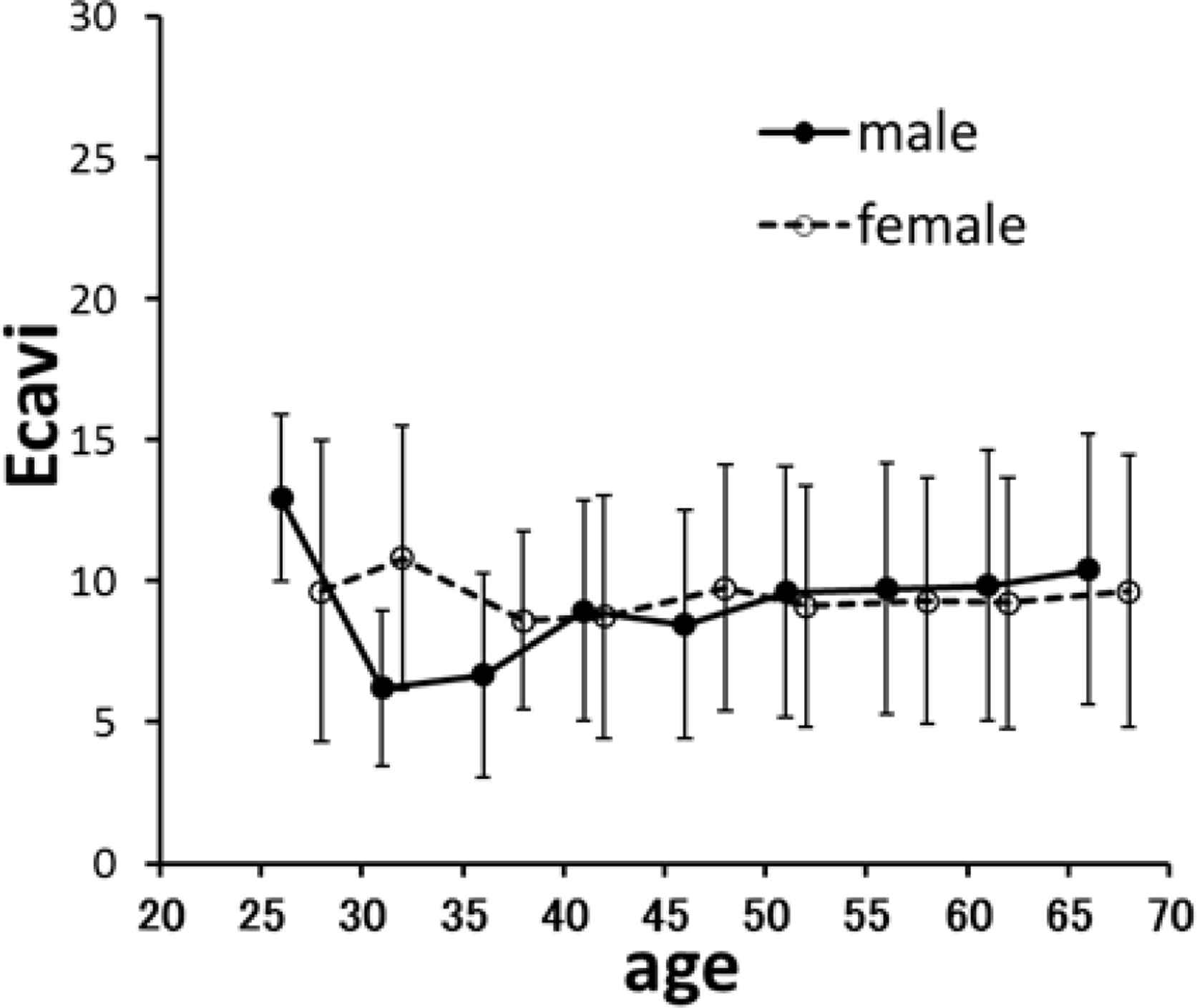PO-25 LEFT VENTRICULAR END-SYSTOLIC ELASTANCE (ECAVI) ESTIMATED WITH CAVI
- DOI
- 10.1016/j.artres.2014.09.031How to use a DOI?
- Open Access
- This is an open access article distributed under the CC BY-NC license.
Objective: Left ventricular end-systolic elastance (Ecavi) was estimated using the parameters measured for calculating cardio-ankle vascular index (CAVI).
Methods: Participants comprised 4,954 healthy individuals (2,679 males, 2,275 females) who visited the health examination center at Fukui-ken Saiseikai Hospital between July 2007 and November 2013. Left ventricular-arterial coupling (Ees/Ea) was obtained from end-systolic arterial pressure (Pes), end-diastolic arterial pressure (Pd), pre-ejection period (PEP) and ejection time (ET), all of which were obtained as parameters measured on a vascular screening system (VaSera VS-1500N; Fukuda Denshi, Tokyo, Japan) based on the non-invasive method described by Hayashi et al.(1). Mean arterial pressure (Pm) was assumed to be equal to Pes for the calculation of Ees/Ea(2) in this study. Ees/Ea was assumed as the balance of stiffness between the end-systolic left ventricle and aorta. Left ventricular end-systolic elastance estimated with CAVI was defined as CAVI × Ees/Ea.
Results: The population showed the same results as the healthy group recruited in the user’s manual of the vascular screening system (Fig. 1); namely, normal range of CAVI was between 6.3 and 8.7, CAVI was higher in males than in females, and CAVI was slightly increased in the high aged group. Mean and standard deviation of Ecavi were 9.3 and 4.5, respectively, in all age groups, and in both males and females (Fig. 2).
Conclusion: The original left ventricular end-systolic elastance (Ees) could be estimated as Ecavi, representing CAVI × Ees/Ea, using a non-invasive vascular screening system.

Average of CAVI in Healthy Group.

Average of Ecavi in Healthy Group.
Cite this article
TY - JOUR AU - H. Yoshikawa AU - N. Yamasaki AU - K. Kobashi AU - A. Takaku AU - Y. Obata AU - H. Shigemi AU - T. Hamada AU - K. Okafuji AU - K. Shigemi PY - 2014 DA - 2014/11/04 TI - PO-25 LEFT VENTRICULAR END-SYSTOLIC ELASTANCE (ECAVI) ESTIMATED WITH CAVI JO - Artery Research SP - 175 EP - 175 VL - 8 IS - 4 SN - 1876-4401 UR - https://doi.org/10.1016/j.artres.2014.09.031 DO - 10.1016/j.artres.2014.09.031 ID - Yoshikawa2014 ER -
